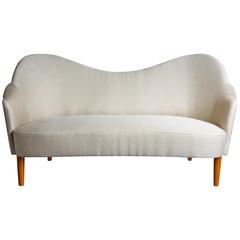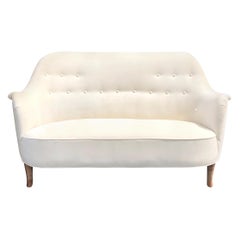Sampsel Sofa
Vintage 1950s Swedish Sofas
Wood
Recent Sales
Mid-20th Century Swedish Sofas
Beech
Mid-20th Century Swedish Mid-Century Modern Sofas
Fabric, Beech
Vintage 1950s Swedish Scandinavian Modern Sofas
Wool, Beech
Vintage 1950s Swedish Scandinavian Modern Sofas
Wool, Beech
Vintage 1950s Swedish Scandinavian Modern Sofas
Wool, Beech
Vintage 1950s Swedish Scandinavian Modern Sofas
Wool, Beech
Vintage 1950s Swedish Scandinavian Modern Sofas
Wool, Beech
Vintage 1950s Swedish Scandinavian Modern Sofas
Wool, Beech
Vintage 1950s Swedish Scandinavian Modern Sofas
Wool, Beech
Vintage 1950s Swedish Scandinavian Modern Sofas
Wool, Beech
Vintage 1950s Swedish Scandinavian Modern Sofas
Wool, Beech
Vintage 1950s Swedish Scandinavian Modern Sofas
Wool, Beech
Vintage 1950s Swedish Scandinavian Modern Sofas
Wool, Beech
Vintage 1950s Swedish Scandinavian Modern Sofas
Wool, Beech
Vintage 1950s Swedish Scandinavian Modern Sofas
Wool, Beech
Vintage 1950s Swedish Mid-Century Modern Sofas
Beech, Fabric
Vintage 1950s Swedish Sofas
Sampsel Sofa For Sale on 1stDibs
How Much is a Sampsel Sofa?
Carl Malmsten for sale on 1stDibs
Carl Malmsten, a prominent furniture designer and educator associated with Swedish modernism, enjoyed immense popularity for his shapely sofas and armchairs in luscious color palettes. Malmsten believed that light — much like our eyes and bodies — doesn’t like to bump into sharp objects. Smooth edges, on the other hand, are kinder to the eye and and to our touch, and allow light to softly bounce off surfaces. Malmsten felt that if his furniture didn’t “serve well” in the home, it had no business being there.
Malmsten’s career essentially began in 1915, when his submissions for a competition to furnish the new Stockholm City Hall were first- and second-place prize winners. In the 1920s, his profile soared. He won a prize at the International Exhibition of Modern Decorative and Industrial Arts — the show that brought the Art Deco style to worldwide attention — and quickly became one of the most sought-after designers of commercial seating in Sweden.
Malmsten was soon contracted to design chairs, tables and other furniture for the Stockholm Concert Hall, the Swedish Institute in Rome and the Waldorf Astoria hotel in New York. His famous Art Nouveau-influenced Stadshusstolen chair, designed for Stockholm City Hall in 1916, is a highlight of the city’s recently opened Museum of Furniture Studies. Malmsten expanded into interior design and created a luxurious, well-appointed living room in the palace of then-Crown Prince Gustaf Adolf and his bride, Crown Princess Louise.
In the 1930s, Malmsten clashed with critics when he voiced his opposition to functionalism. Like Danish modernist Kaare Klint, he favored using quality local materials and prized traditional craftsmanship. Malmsten’s furniture draws on graceful neoclassical influences, and he said that extreme functionalism contributed to “sterile” interiors — while the curving contours of his work may share ground with furniture designed by Alvar Aalto or Bruno Mathsson, Malmsten differed with Bauhaus eminences and some Scandinavian modernists on their prioritization of functionalism.
For an exhibition in 1956 at the Röhsska Museum in Gothenburg, Malmsten designed furniture that was intended for mass production — and his striking designs began to make their way into middle-class Swedish homes owing to Malmsten’s partnerships with manufacturers such as O.H. Sjögren. Until then, he had built his pieces at the school he founded in the 1930s or had them made by artisans at several small local workshops.
Malmsten founded a number of schools for design and collaborated with other designers who shared his philosophy of “hand and mind in creative collaboration.” These included the esteemed textile artist Märta Måås Fjetterström, whose pieces he included in exhibits and even his own home.
On 1stDibs, find vintage Carl Malmsten seating, tables, cabinets and more.
Finding the Right Sofas for You
Black leather, silk velvet cushions, breathable bouclé fabric — when shopping for antique or vintage sofas, today’s couch connoisseurs have much to choose from in terms of style and shape. But it wasn’t always thus.
The sofa is typically defined as a long upholstered seat that features a back and arms and is intended for two or more people. While the term “couch” comes from the Old French couche, meaning to lie down, and sofa has Eastern origins, both are forms of divan, a Turkish word that means an elongated cushioned seat. Bench-like seating in Ancient Greece, which was padded with soft blankets, was called klinai. No matter how you spell it, sofa just means comfort, at least it does today.
In the early days of sofa design, upholstery consisted of horsehair or dried moss. Sofas that originated in countries such as France during the 17th century were more integral to decor than they were to comfort. Like most Baroque furnishings from the region, they frequently comprised heavy, gilded mahogany frames and were upholstered in floral Beauvais tapestry. Today, options abound when it comes to style and material, with authentic leather offerings and classy steel settees. Plush, velvet chesterfields represent the platonic ideal of coziness.
Vladimir Kagan’s iconic sofa designs, such as the Crescent and the Serpentine — which, like the sectional sofas of the 1960s created by furniture makers such as Harvey Probber, are quite popular among mid-century modern furniture enthusiasts — showcase the spectrum of style available to modern consumers. Those looking to make a statement can turn to Studio 65’s lip-shaped Bocca sofa, which was inspired by the work of Salvador Dalí. Elsewhere, the furniture of the 1970s evokes an era when experimentation ruled, or at least provided a reason to break the rules. Just about every area of society felt a sudden urge to be wayward, to push boundaries — and buttons. Vintage leather sofas of that decade are characterized by a rare blending of the showy and organic.
With so many options, it’s important to explore and find the perfect furniture for your space. Paying attention to the lines of the cushions as well as the flow from the backrest into the arms is crucial to identifying a cohesive new piece for your home or office.
Fortunately, with styles from every era — and even round sofas — there’s a luxurious piece for every space. Deck out your living room with an Art Deco lounge or go retro with a nostalgic '80s design. No matter your sitting vision, the right piece is waiting for you in the expansive collection of unique sofas on 1stDibs.


